|
The Sexual Intellectual
Join Date: Dec 2004
Location: Somewhere cooler than you
Posts: 18,626
|

Origins - Part 1: The Beginning
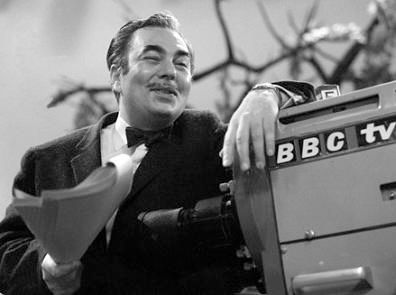 Sydney Newman
Sydney Newman
The genesis of Doctor Who started in late 1962 when Canadian Sydney Newman became Head of Drama at the BBC. Newman had a reputation for being a good ideas man with his finger on the pulse of what viewers wanted. He had left his job in his native Canada working for CBC and had moved over to the newly formed ITV network in Britain in 1958. After 4 years working for ITV where he had huge successes with shows he had created such as The Avengers and the gritty Armchair Theatre he made a move to the BBC with the intention of modernising it and getting rid of the stuffy upper class mentality it had and make programmes for the middle & working classes, the people who actually watched TV. Needless to say not everybody was thrilled by his appointment.
At the BBC one of the first things that became apparent to the BBC Controller of Programmes Donald Baverstock was that there was a half hour slot on Saturday evenings between two hugely popular shows that was losing viewers. Usually it would feature a Dickens adaptation or something along those lines. It fell between Grandstand, the BBC's flagship Saturday afternoon sports show and Juke-Box Jury an early evening pop music show where the pop stars of the day gave their opinions on new records entering the charts. Newman was ordered by Baverstock to come up with ideas for a show to fill this half hour.
Although there was no pressure to make the show a science fiction show specifically (A drama at a school was proposed & rejected) it was decided fairly early on by Newman that he wanted to go down that route having had success with an adaptation of 20,000 Leagues Under The Sea for CBC and a show for ITV called Pathfinders which even to this day is considered one of the most influential children's TV shows ever made. Pathfinders was about explorations in space. Newman wanted something like this only this time his main influence would be The Time Machine by H.G. Wells.
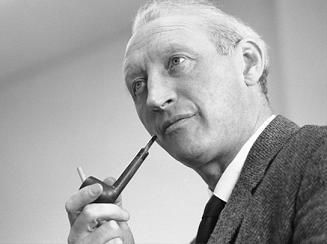 Donald Wilson
Donald Wilson
In early 1963 Newman drafted a memo featuring the basics of the series and gave it to Donald Wilson the head of serials. The memo contained the ideas that the time ship be bigger on the inside than out, also that the main character be a crotchety senile old man who has flashes of brilliance, that is on Earth because he is on the run from an advance civilization from the future. He also cannot control this time ship meaning he cannot get his human companions back home thus allowing them to have more adventures.
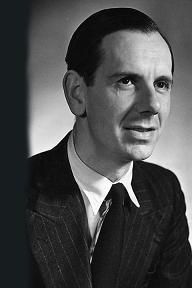 Rex Tucker
Rex Tucker
After being sceptical at first Wilson thought there was something in this and in March 1963 bought in Producer / Director Rex Tucker. Tucker did not want to commit to a lengthy serial, least of all Doctor Who which he hated the idea of. It was agreed he would just be a caretaker producer and help get the project off the ground. It has been suggested by actor and director Hugh David (More of him later) that it was Tucker who came up with the name 'Doctor Who' around this time but there is no documentation to confirm this.
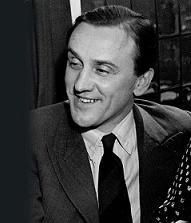 C.E. 'Bunny' Webber
C.E. 'Bunny' Webber
Wilson and Tucker bought in a mutual friend, writer C.E. Webber, known as Bunny to his friends. Bunny was given the task of fleshing out the ideas on Newman's memo and writing the first serial. Here's the four page document he came up with, Sydney Newman's notes are also included.
Quote:
C.E. Webber and Sydney Newman outline the format for the new 'Doctor Who' series.
BBC ARCHIVE WRITTEN DOCUMENT 1963
[Page 1 of 4]
"DR. WHO"
General Notes on Background and Approach
A series of stories linked to form a continuing serial; thus if each story ran 6 or 7 episodes there would be about 8 stories needed for 52 weeks of the serial. With the overall title, each episode is to have its own title. Each episode of 25 minutes will begin by repeating the closing sequence or final climax of the preceding episode; about halfway through, each episode will reach a climax, followed by blackout before the second half commences (one break).
[Handwritten note from Sydney Newman: "Each episode to end with a very strong cliff-hanger."]
Each story, as far as possible, to use repeatable sets. It is expected that BP [abbreviation for 'back projection'] will be available. A reasonable amount of film, which will probably be mostly studio shot for special effects. Certainly writers should not hesitate to call for any special effects to achieve the element of surprise essential in these stories, even though they are not sure how it would be done technically: leave it to the Effects people. Otherwise work to a very moderate budget.
There are four basic characters used throughout:-
CHARACTERS
BRIDGET (BIDDY) A with-it girl of 15, reaching the end of her Secondary School career, eager for life, lower-than-middle class. Avoid dialect, use neutral accent laced with latest teenage slang.
MISS McGOVERN (LOLA) 24. Mistress at Biddy's school. Timid but capable of sudden rabbit courage. Modest, with plenty of normal desires. Although she tends to be the one who gets into trouble, she is not to be guyed: she also is a loyalty character.
CLIFF 27 or 28. Master at the same school. Might be classed as ancient by teenagers except that he is physically perfect, strong and courageous, a gorgeous dish. Oddly, when brains are required, he can even be brainy, in a diffident sort of way.
[Handwritten note from Sydney Newman: "Top of his class in the parallel bars."]
These are the characters we know and sympathise with, the ordinary people to whom extraordinary things happen. The fourth basic character remains always something of a mystery, and is seen by us rather through the eyes of the other three....
DR. WHO A frail old man lost in space and time. They give him this name because they don't know who he is. He seems not to remember where he has come from; he is suspicious and capable of sudden malignance; he seems to have some undefined enemy; he is searching for something as well as fleeing from something. He has a "machine" which enables them to travel together through time, through space, and through matter.
|
Quote:
[Page 2 of 4]
QUALITY OF STORY Evidently, Dr. Who's "machine" fulfils many of the functions of conventional Science Fiction gimmicks. But we are not writing Science Fiction. We shall provide scientific explanations too, sometimes, but we shall not bend over backwards to do so, if we decide to achieve credibility by other means. Neither are we writing fantasy: the events have got to be credible to the three ordinary people who are our main characters, and they are sharp-witted enough to spot a phoney. I think the writer's safeguard here will be, if he remembers that he is writing for an audience aged fourteen... the most difficult, critical, even sophisticated, audience there is, for TV. In brief, avoid the limitations of any label and use the best in any style or category, as it suits us, so long as it works in our medium.
[Handwritten note from Sydney Newman: "Not clear"]
Granted the startling situations, [Handwritten note from Sydney Newman: "What startling situations."] we should try to add meaning; to convey what it means to be these ordinary human beings in other times, or in far space, or in unusual physical states. We might hope to be able to answer the question: "Besides being exciting entertainment, for 5 o'clock on a Saturday, what is worthwhile about this serial?"
[Handwritten note from Sydney Newman: "Not clear"]
DR WHO'S "MACHINE"
When we consider what this looks like, we are in danger of either Science Fiction or Fairytale labelling. If it is a transparent plastic bubble we are with all the low grade space fiction of cartoon strip and soap-opera. If we scotch this by positing something humdrum, say, passing through some common object in street such as a night-watchman's shelter to arrive inside a marvellous contrivance of quivering electronics, then we simply have a version of the dear old Magic Door.
Therefore, we do no see the machine at all; or rather it is visible only as an absence of visibility, a shape of nothingness (Inlaid, into surrounding picture). Dr. Who has achieved this "disappearance" by covering the outside with light-resistant paint (a recognised research project today). Thus our characters can bump into it, run their hands over its shape, partly disappear by partly entering it, and disappear entirely when the door closes behind them.
[Handwritten note from Sydney Newman: "Not visual. How to do? Need tangible symbol"]
It can be put into an apparently empty van. Wherever they go some contemporary disguise has to be found for it. Many visual possibilities can be worked out. The discovery of the old man and investigation of his machine would occupy most of the first episode, which would be called:-
"Nothing at the End of the Lane"
[Handwritten note from Sydney Newman: "Don't like this at all. What do we see?"]
The machine is unreliable, being faulty. A recurrent problem is to find spares. How to get thin gauge platinum wire in B.C.1566? Moreover, Dr. Who has lost his memory, so they have to learn to use it, by a process of trial and error, keeping records of knobs pressed and results (This is the fuel for many a long story). After several near-calamities they institute a safeguard: one of their number is left in the machine when the others go outside, so that at the end of an agreed time, they can be fetched back into their own era. This provides a suspense element in any given danger: can they survive till the moment of recall? Attack on recaller etc.
[Handwritten note from Sydney Newman: "Good stuff here"]
|
Quote:
[Page 3 of 4]
Granted this machine, then, we require exciting episodic stories, using surprising visual effects and unusual scenery, about excursions into time, into space, or into any material state we can make feasible. Hardly any time at all is spent in the machine: we are interested in human beings.
OVERALL CONTINUITY OF STORY.
Besides the machine we have the relationship of the four characters to each other. They want to help the old man find himself; he doesn't like them; the sensible hero never trusts Dr. Who; Biddy rather dislikes Miss McGovern; Lola admires Cliff... these attitudes developed and varied as temporary characters are encountered and reacted to. The old man provides continuing elements of Mystery, and Quest.
He remains a mystery. From time to time the other three discover things about him, which turn out to be false or inconclusive. (i.e. any writer inventing an interesting explanation must undercut it within his own serial-time, so that others can have a go at the mystery). They think he may be a criminal fleeing from his own time; he evidently fears pursuit through time. Sometimes they doubt his loss of memory, particularly as he does have flashes of memory. But also, he is searching for something which he desires heart-and-soul, but which he can't define. If, for instance, they were to go back to King Arthur's time, Dr. Who would be immensely moved by the idea of the quest for the Grail. This is, as regards him, a Quest Story, a Mystery Story, and a Mysterious Stranger Story, overall.
While his mystery may never be solved, or may perhaps be revealed slowly over a very long run of stories, writers will probably like to know an answer. Shall we say:-
The Secret of Dr. Who: In his own day, somewhere in our future, he decided to search for a time or for a society or for a physical condition which is ideal, and having found it, to stay there. He stole the machine and set forth on his quest. He is thus an extension of the scientist who has opted out, but he has opted farther than ours can do, at the moment. And having opted out, he is disintegrating.
[Handwritten note from Sydney Newman: "Don't like this at all. Dr Who will become a kind of father figure - I don't want him to be a reactionary."]
One symptom of this is his hatred of scientist, inventors, improvers. He can get into a rare paddy when faced with a cave man trying to invent a wheel. He malignantly tries to stop progress (the future) wherever he finds it, while searching for his ideal (the past). This seems to me to involve slap up-to-date moral problems, and old ones too.
In story terms, our characters see the symptoms and guess at the nature of his trouble, without knowing details; and always try to help him find a home in time and space. wherever he goes he tends to make ad-hoc enemies; but also there is a mysterious enemy pursuing him implacably every when: someone from his own original time, probably. So, even if the secret is out by the 52nd episode, it is not the whole truth. Shall we say:-
|
Quote:
[Page 4 of 4]
[Continued from previous page]
The Second Secret of Dr. Who: The authorities of his own (or some other future) time are not concerned merely with the theft of an obsolete machine; they are seriously concerned to prevent his monkeying with time, because his secret intention, when he finds his ideal past, is to destroy or nullify the future.
[Handwritten note from Sydney Newman: "Nuts"]
If ever we get thus far into Dr. Who's secret, we might as well pay a visit to his original time. But this is way ahead for us too. Meanwhile, proliferate stories.
The first two stories will be on the short side, four episodes each, and will not deal with time travel. The first may result from the use or a micro-reducer in the machine which makes our characters all become tiny. By the third story we could first reveal that it is a time-machine; they witness a great calamity, even possibly the destruction of the earth, and only afterwards realize that they were far ahead in time. Or to think about Christmas: which seasonable story shall we take our characters into? Bethlehem? Was it by means of Dr. Who's machine that Aladin's palace sailed through the air? Was Merlin Dr. Who? Was Cinderella's Godmother Dr. Who's wife chasing him through time? Jacob Marley was Dr. Who slightly tipsy, but what other tricks did he get up to that Yuletide?
[Handwritten note from Sydney Newman: "I don't like this much - it reads silly and condescending. It doesn't get across the basis of teaching of educational experience - drama based upon and stemming from factual material and scientific phenomena and actual social history of past and future. Dr. Who - not have a philosophical arty-science mind - he'd take science, applied and theoretical, as being as natural as eating."]
- DOCUMENT ENDS -
|
Webber having got feedback from Newman then went on to write the first script which would see The Doctor & his 3 companions reduced in size to an inch tall and find themselves trapped in their school. This script was rejected outright by Tucker who felt that Webber had written something too cerebral for children and that he was too good a writer to be wasted on Doctor Who although in truth he knew it was the old fashioned kind of writing Newman was anxious to get away from. The concept would be revisited by writer Louis Marks for the series 2 opening story Planet Of Giants.
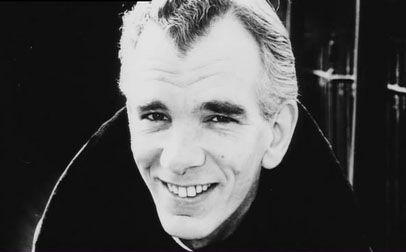  David Whitaker & Anthony Coburn
David Whitaker & Anthony Coburn
Two more writers were bought in, one was Australian Anthony Coburn who had been recruited to rewrite the first story and the second was David Whitaker who would be the shows script editor. Coburn's script bought in many of the things we know about the show today. It was him that suggested the ship be a police box, it was him that came up with the name TARDIS and it was him who changed Cliff, Lola & Biddy to Ian, Barbara & Susan. It was also him who suggested Susan be the Doctor's granddaughter because he felt that a teenager travelling around on her own with an old man distasteful. The script for the first episode was liked after a few tweaks (Whitaker wanted it less educational and more exciting) and Coburn began working on his script set in the stone age that would be tagged onto the first episode to make up the first story.
By now it was April 1963 and Tucker was beginning to look at actors for the show. He interviewed an unknown Australian actress to play the part of Susan but nothing became of it. He also approached actor Hugh David who had just finished playing the lead in a successful ITV show called Knight Errant about playing the role of The Doctor. David turned it down saying that he was uncomfortable with the fame that came with a long running show. Later he would become a director and direct two Doctor Who stories during Patrick Troughton's run. He also recruited electronic music pioneer Tristam Carey to do the music for the show.
Meanwhile Sydney Newman who was having less day to day input into the show needed a permanent producer. He first asked director & play-write Don Taylor who turned it down instantly. Taylor was one of those people who disliked Newman labelling him as 'an uncultured populist with no theatrical knowledge or background'.
Secondly he asked Shaun Sutton a staff producer at the BBC but Sutton was making a name for himself with adult dramas such as Z Cars & The Troubleshooters and wanted to remain doing them. It was then that Newman decided to phone up a 27 year old production assistant he had worked with at ITV....
__________________
 Urb's RYM Stuff
Most people sell their soul to the devil, but the devil sells his soul to Nick Cave.
Urb's RYM Stuff
Most people sell their soul to the devil, but the devil sells his soul to Nick Cave.
Last edited by Urban Hat€monger ?; 04-29-2015 at 10:09 AM.
|